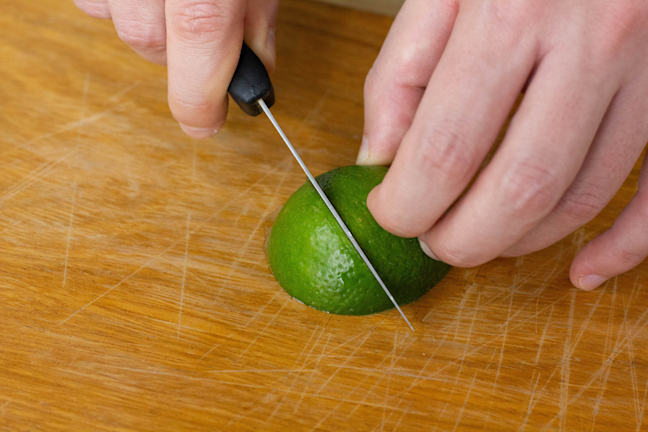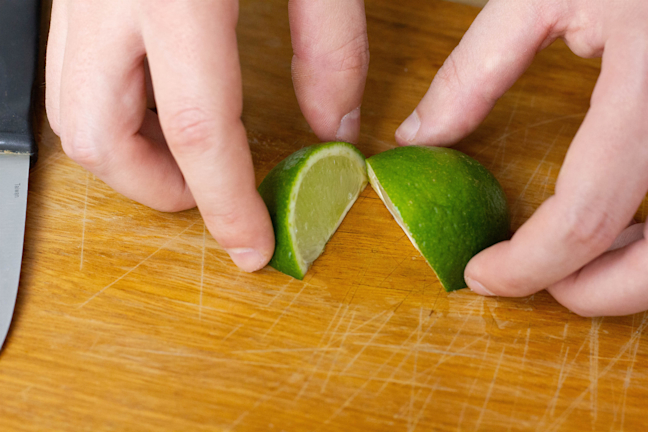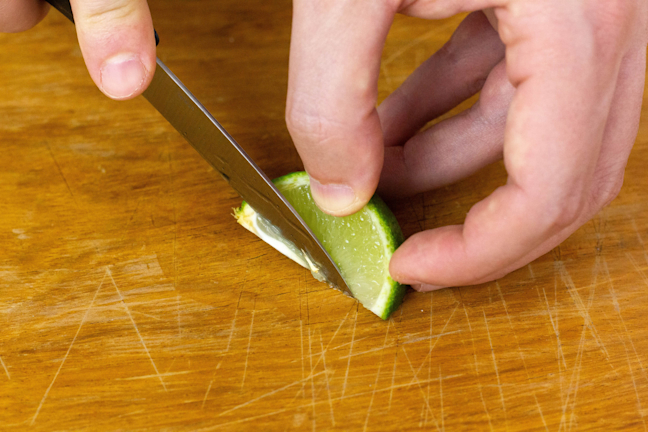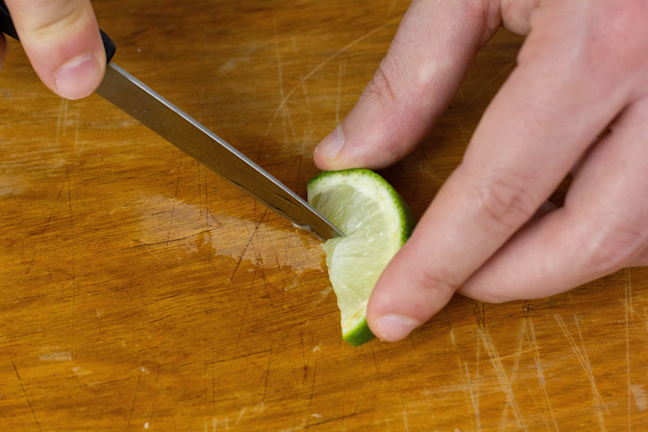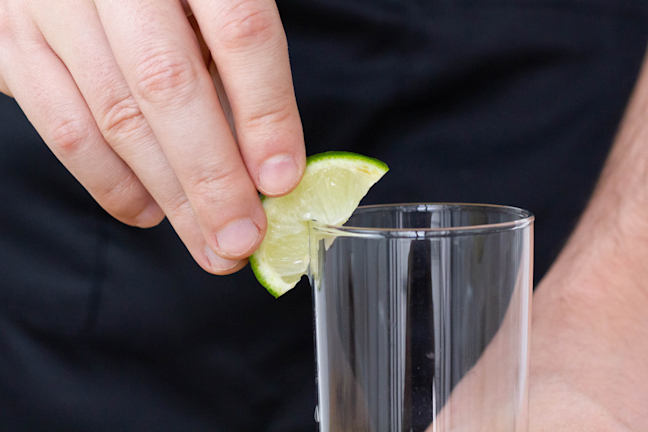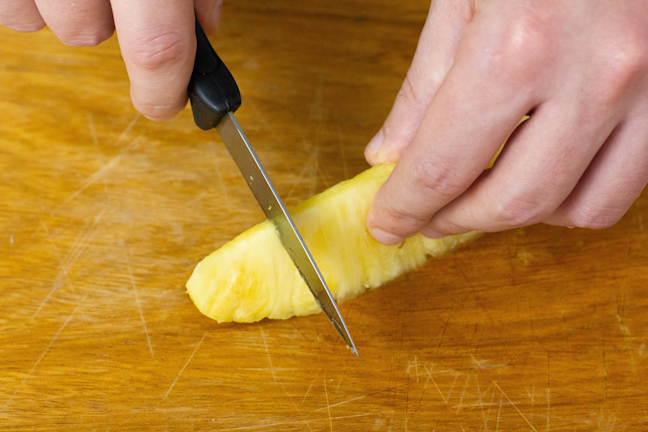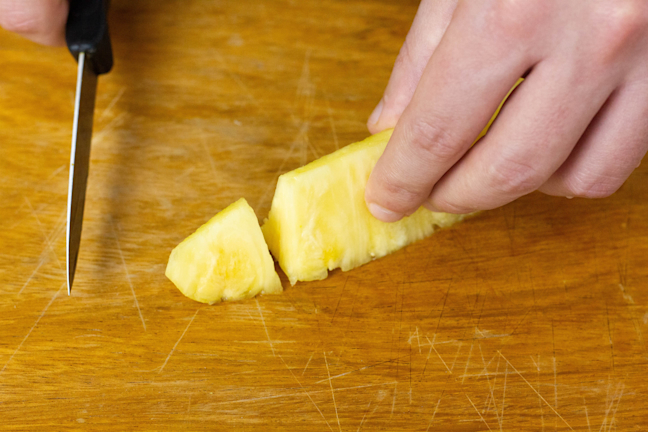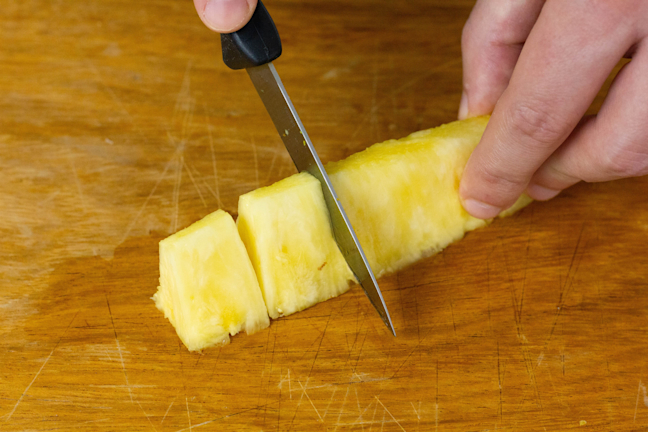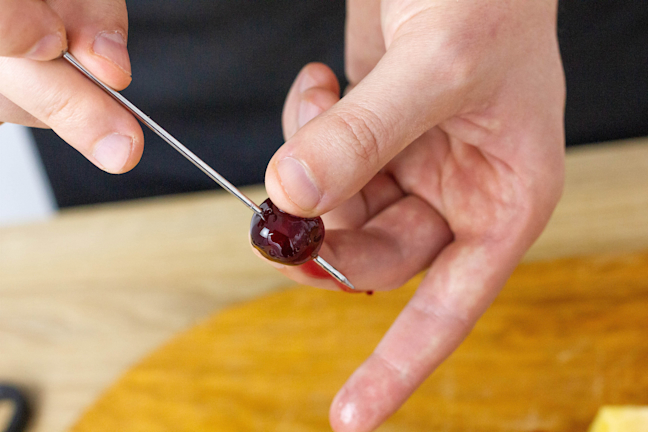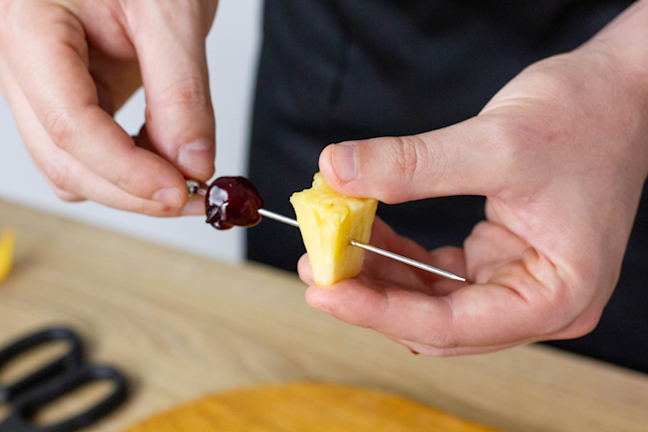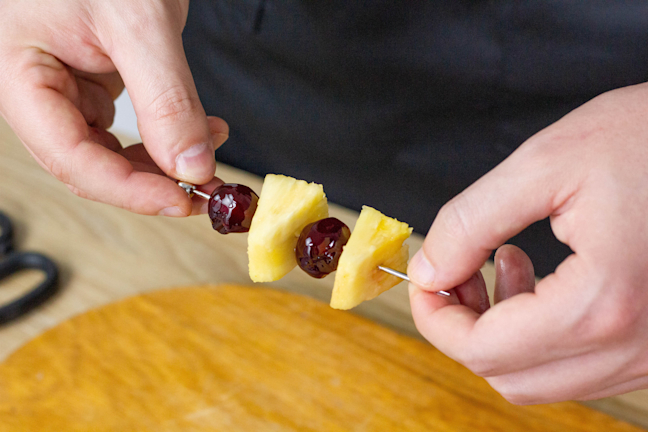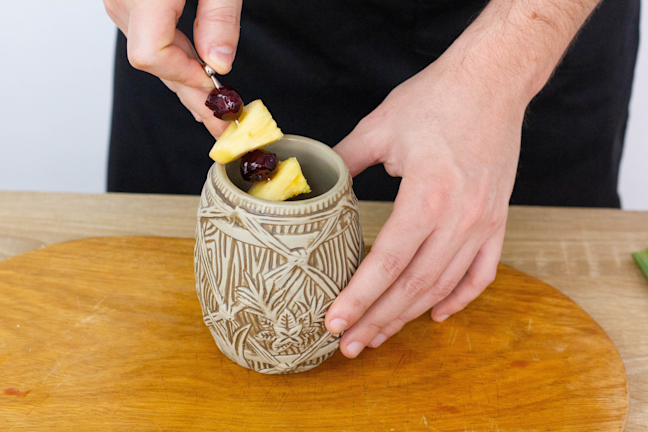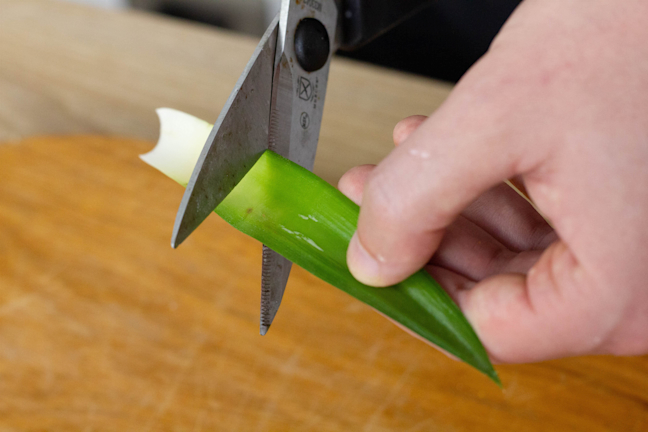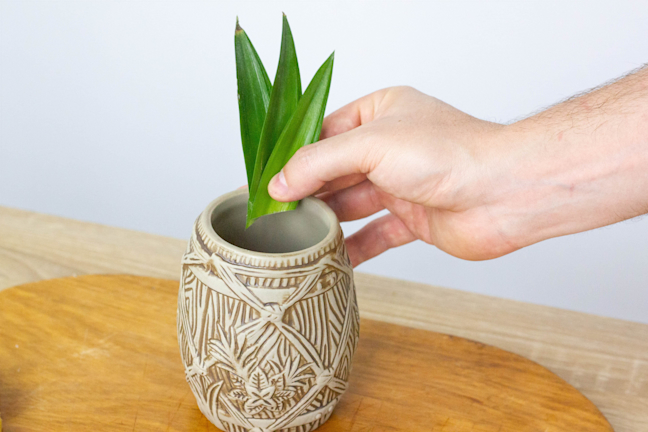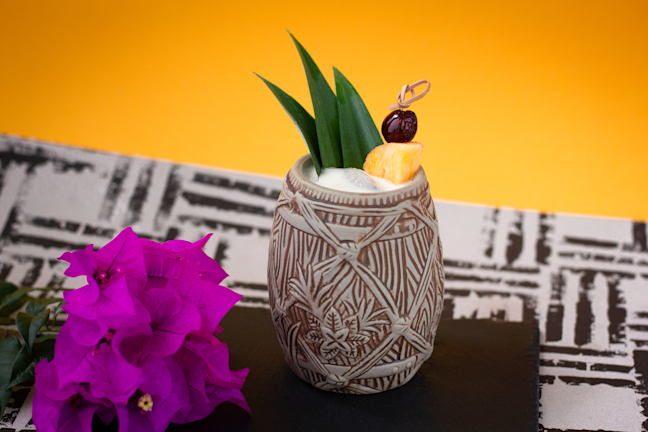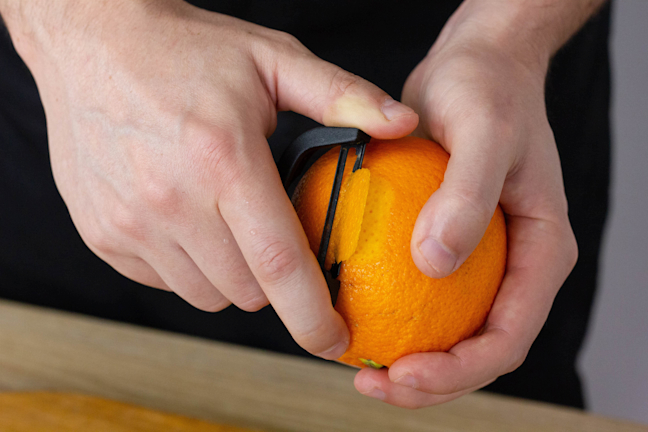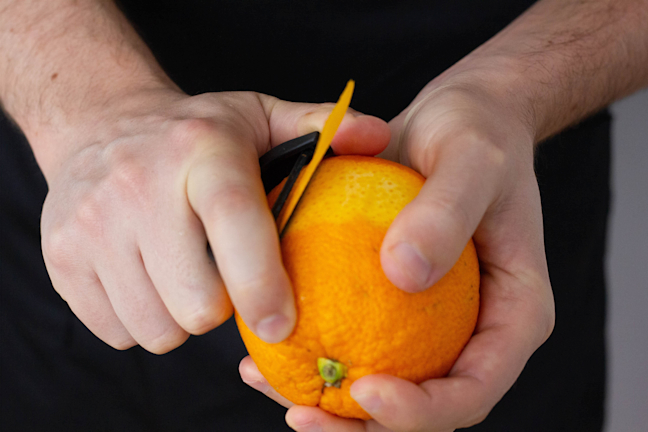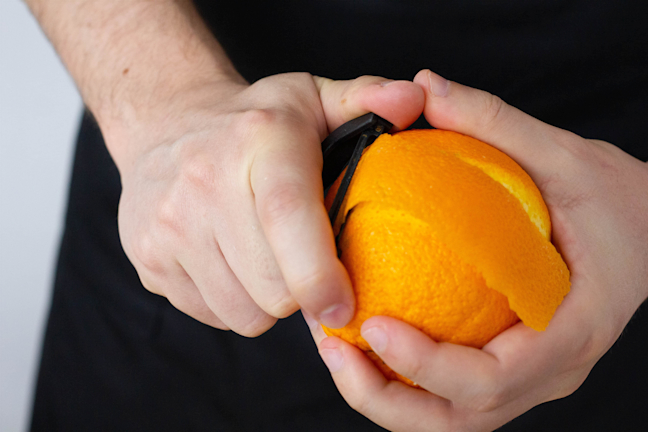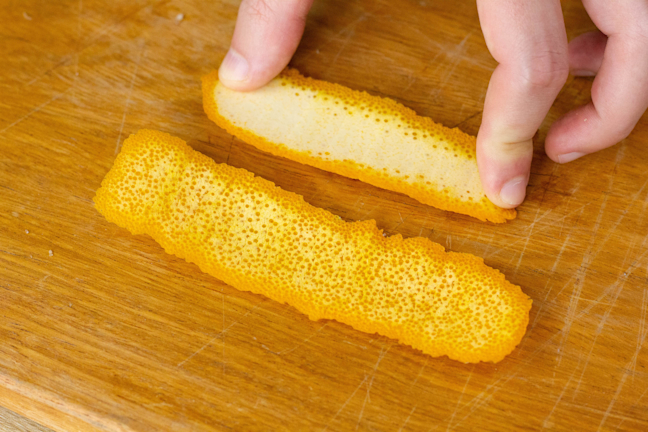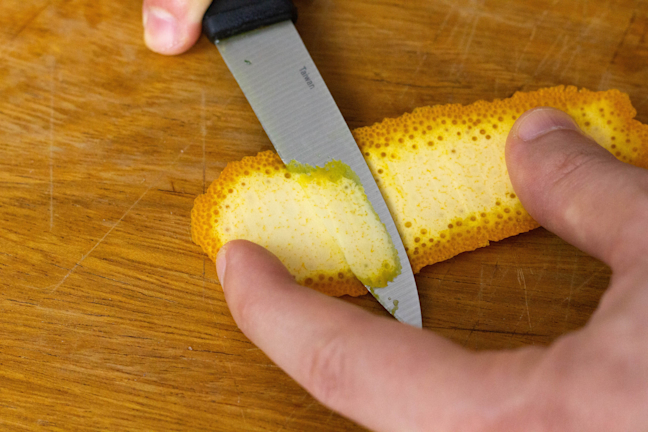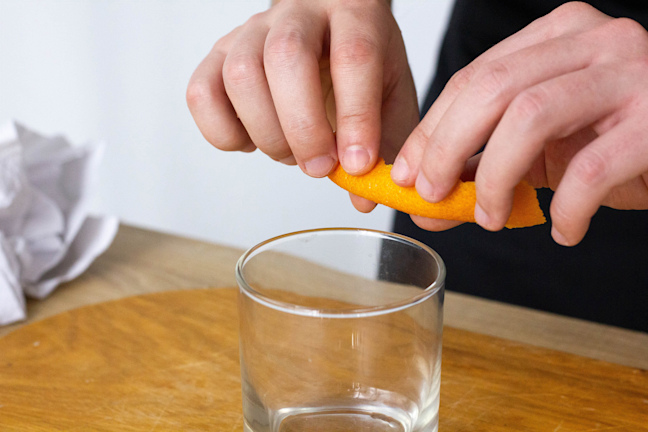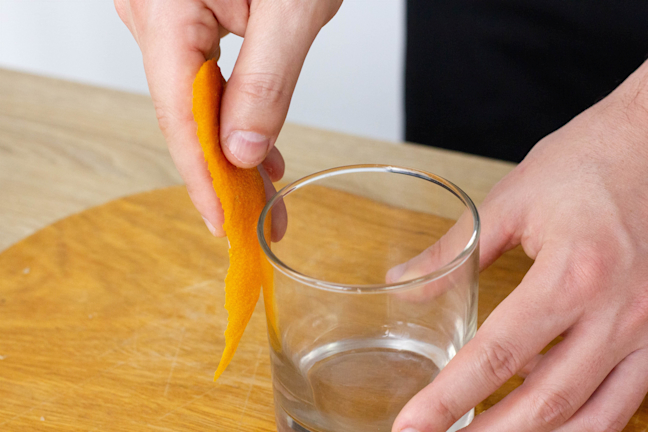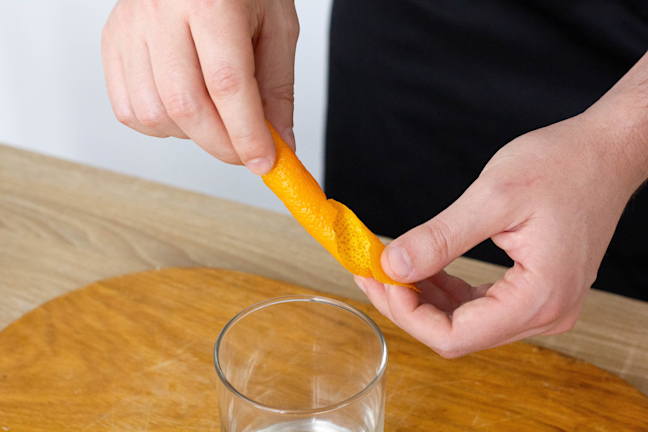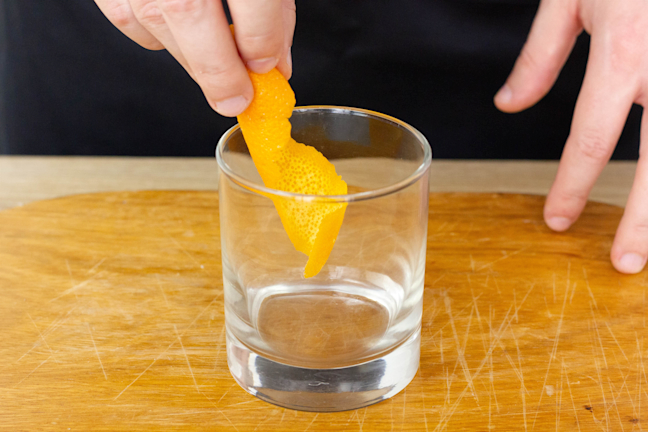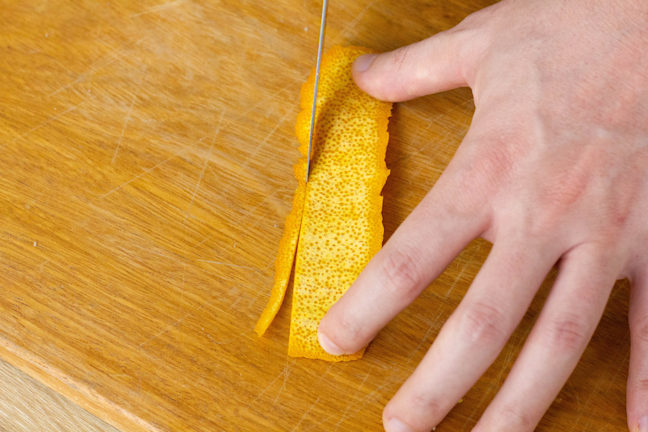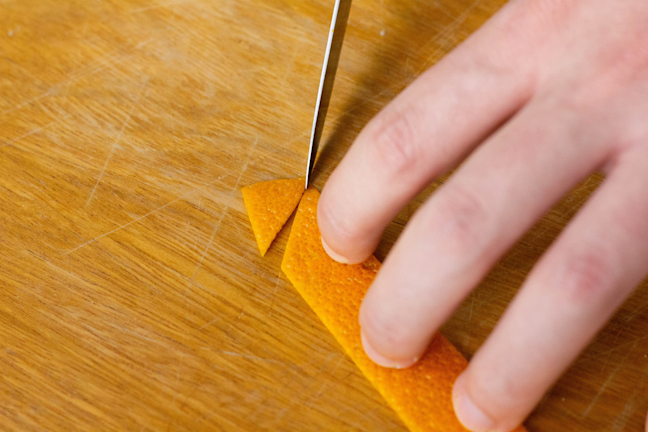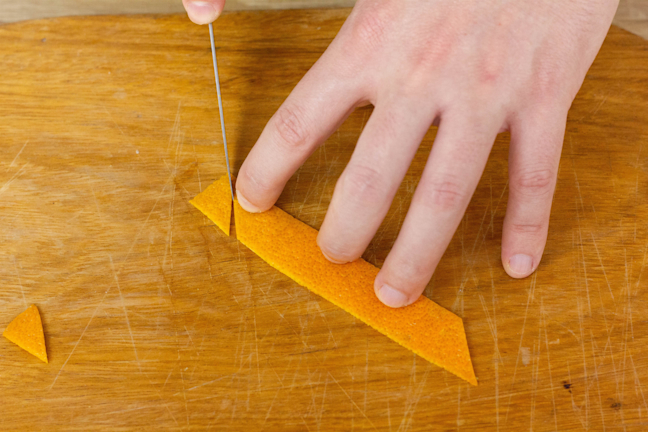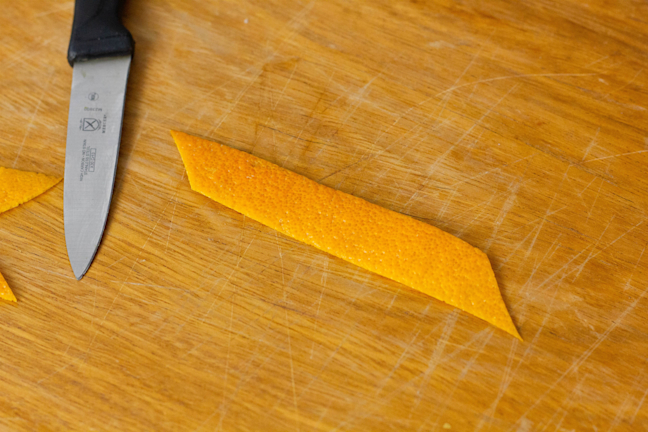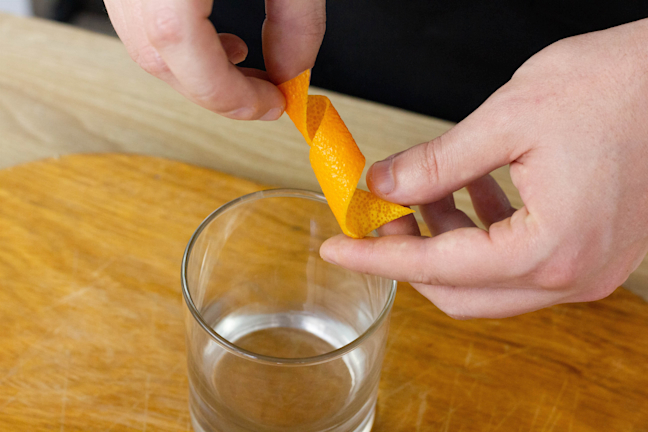Basic Cocktail Garnishes
Even the simplest garnish will make a huge difference in the presentation of your drinks. It will make them more appetizing and show that you’re paying attention to detail. It doesn’t end there, however, garnishes can also bring aromas and flavors into a cocktail that either accentuate or complement the recipe’s ingredients.
Always remember that your sense of smell and taste go hand in hand. Use it to your advantage!
You’ve already learned about preparing a mint bouquet and a lime wheel in previous lessons. Let’s go over a few others.
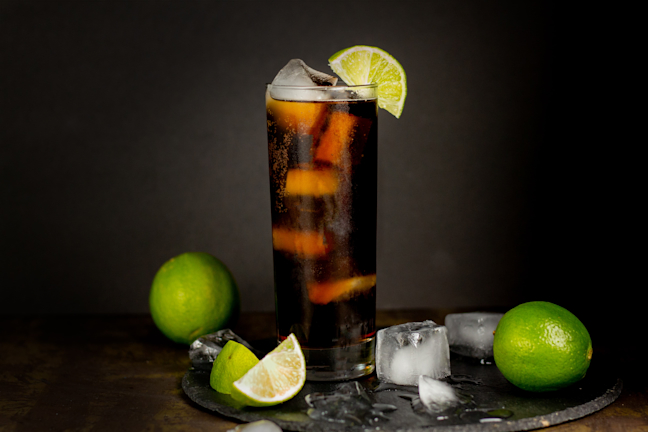
Lime Wedges
While lime wheels are used in cocktails that already have lime juice in them, or to evoke an idea of something refreshing, lime wedges are used in a cocktail whenever you want to give the option of squeezing some extra juice into the drink.
Cutting a lime wedge is easy. Take a knife and cut the lime in half, then cut a wedge at an angle. You can optionally remove the white membrane. Finally, make another cut so that the wedge can stand on the rim of the glass.

Skewers
You’ve likely seen these in a Martini, where the skewer is usually made up of one or three olives (two is bad luck!).
Skewers can be made up of anything you can think of but are generally meant to either have flavors that pair well with the cocktail, or to point out some of the ingredients in the drink (like pineapple wedges for a Piña Colada).
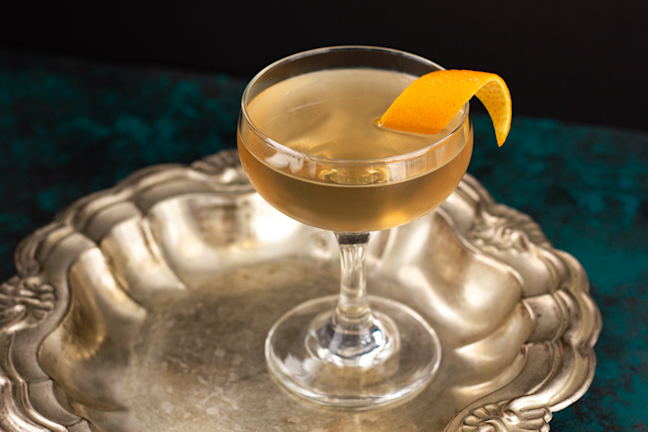
Citrus Twists
Citrus twists are perhaps one of the most used garnishes. When you twist a citrus peel over a cocktail you will express essential oils that coat it with additional flavors and aromas.
In order to make a twist, first take a citrus fruit (oranges, lemons, grapefruits, etc.) and cut a swathe with either a peeler (like the Y-Peeler used in the picture) or a knife.
It’s okay if the peel you cut has some pith (the white part), you can simply cut it off with a knife.
Once you have the peel, squeeze it over the drink with the colored part away from you. You can optionally rub the peel along the glass to make sure a bit more of those essential oils make it to the finished cocktail.
After that, you can either drop the peel as is, or you can twist it and add it to the drink. These are usually referred to as Rustic twists.
Alternatively, if you want a more elegant twist, after procuring the peel, cut the long edges on a straight line with a knife. Then, cut the smaller edges on the same direction. As with the rustic twist, simply drop the peel into the drink, or give it a twist before you do so.
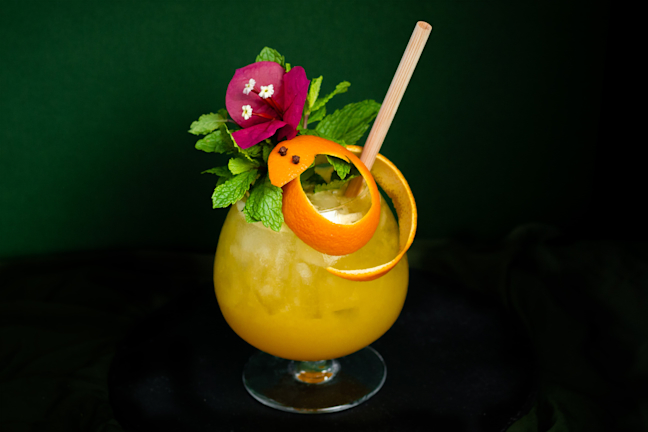
When it comes to garnishes, let your creativity flow, but always remember that they are meant to be a final touch and an accent. Always consider the cocktail’s ingredients and how they may pair with your garnish.
